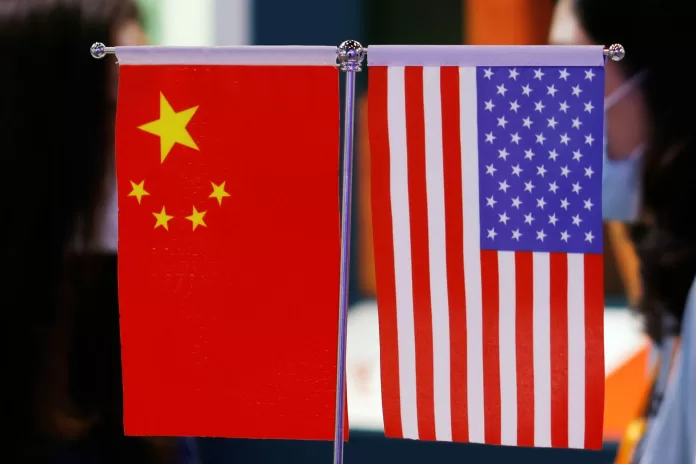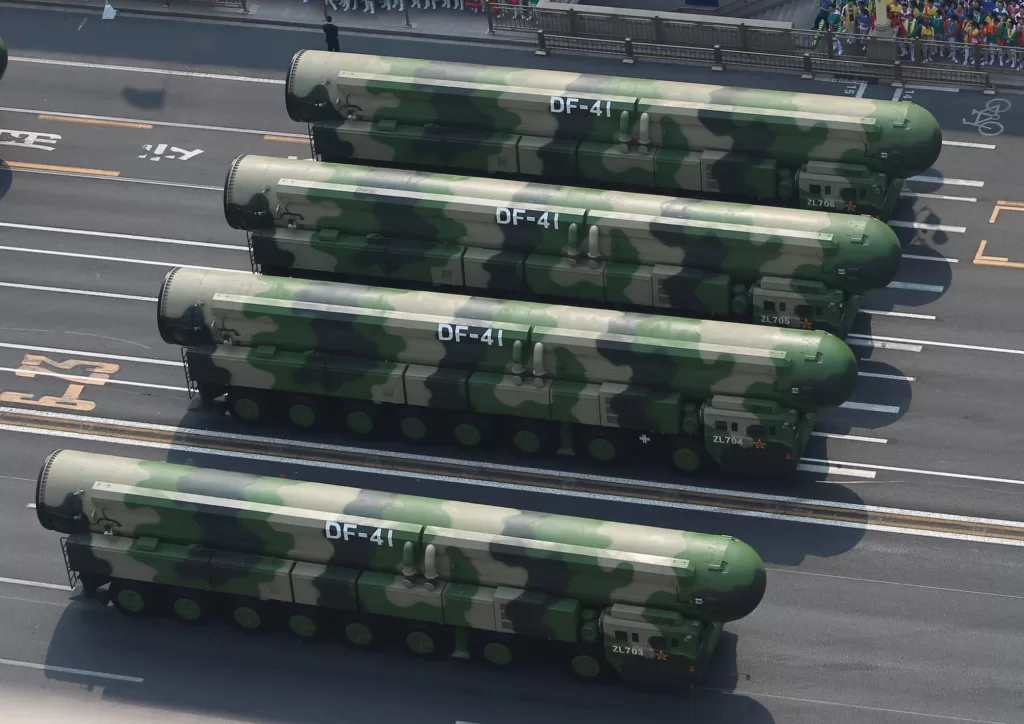
China’s weapon modernization is intensifying its strategic competition with the US, leading to instability in the international security environment. To begin, what is the strategic competition that creates such situations? When Chinese officials were asked, they said that there is no such strategic competition with the US, rather China is compelled to fall under this competition without its consent for the sake of its survivability. Meanwhile, the US also justifies its actions by stating that the Chinese assertiveness in the South China Sea and on the Taiwan issue along with technological advancements, trade war, and diverging opinions on the Ukraine conflict plus the North Korean nuclear program is creating threats to the USA that need to be balanced or countered. This rivalry driven by economic, military, and technological ambitions has both direct and indirect implications for global stability, international security, and international norms.
For a long time, China and the US have had a linear relationship, starting from low intensity and leading to intensified competition. Strategic competition did not exist between the US and China until the late 20th century when China started to emerge as an economic power and criticized the Western economic system for the 2008 financial crisis. The financial crisis shifted the perceptions of strategic thinkers in the US to view China as a potential rival state rather than a partner state.
Subsequently, many incidents such as China’s 2010 military assertiveness pushing its sovereignty claims in the South China Sea and the construction of artificial islands were countered by the US in the form of alliances with regional actors such as Japan, South Korea, Australia, and the Philippines; this established the reality of the existing strategic competition between the two states.
The main component of competition between the US and China is the quest for economic dominance. The US is an established power that faces challenges with the rapid economic growth of China and its Belt and Road Initiative (BRI) which aims to expand its influence through massive infrastructure investments across Asia, Africa, and Europe. The US views these moves as attempts to reshape the global economic order in favour of Chinese interests and often criticizing the BRI for creating debt dependencies among participating countries.

BRI is not the only initiative where such suspicions are harbored; other important steps to keep in mind are the Chinese active participation in the creation and institutionalization of the BRICS New Development Bank and Asia Infrastructure Investment Bank, all of which have led to a new form of Cold War that is leading towards a multipolar world that challenges the status quo. On the singular front, the series of trade wars between the US and China, with both states imposing tariffs on goods, resulted in unpredictability in the international market and trade policies. Although the trade war has had no clear results, the cost of such policies remained a hindrance to global economic stability.
Along with such economic developments, the recent modernization of Chinese nuclear arsenal in numbers and technology under the “lean and effective’ principle has intensified the ongoing US-China strategic competition. Since the end of the Cold War, Chinese nuclear posture remains on a “No first use policy,” retaliation with small arsenals, and strict civilian control.
However, this posture has been questioned because of active technological advancements in land-based nuclear arsenals and changes in naval doctrine. Anti-access/ area denial (A2/AD) capabilities are a fundamental challenge to the US, especially in the South China Sea and the Pacific, which focus on defeating any aggression on the first island chain. It initiates a security dilemma for the US and threatens its national interest in the region.
In response, Washington opted for a reactionist policy to strengthen its alliance with regional actors by creating security pacts such as QUAD, SQUAD, and AUKUS to maintain the “Free and Open Indo-Pacific” strategy.
But free from what, one might ask? Either free from Chinese dominance or for the sake of promoting US interest in the region, which is only possible when there is no rival to challenge the action of the US. Thus, the ultimate goal is to reduce the Chinese factor. China is a regional actor that takes sovereignty over Taiwan and the South China Sea and perceives the military presence of the US near its waters as a threat to its survival, which justifies its nuclear advancement.

According to the Pentagon, since 2022 Chinese nuclear weapons have exceeded 400, and if it continues at the current pace, there will be a 1500 nuclear arsenal in China by 2035. Rapid advancements in China’s military technology are reshaping the strategic balance and raising alarm globally.
Over the past few years, China has introduced formidable weapon systems such as the H-6N bomber, Dongfeng DF-41 solid fuel ICBM, Type 094 submarine, JL-2 submarine-launched ballistic missile, and versatile DF-26 intermediate-range ballistic missile. These developments are not just about numbers; they signify a significant leap in China’s military capabilities, particularly in land-based systems managed by the PLA Rocket Force.
It is important to note that strategic competition between the US and China continues to shape the global landscape. The Biden administration maintained a tough stance on China, emphasizing the need for a coordinated approach with allies to address the challenges posed by China’s rise. Issues such as cybersecurity, human rights, and influence in international organizations remain contentious. Based on these realities, one can contend that such strategies only lead to rising tensions and power politics in the region, as they promote the arms race, nuclear modernization, and technological advances between the two powers, resulting in the Thucydides trap that could ultimately lead to intensifying military exercises and operations that both states will lose without any concrete results. This is why both states need to adopt a rather flexible posture and try to mitigate tensions through diplomatic means that will open venues of cooperation rather than conflicts.




